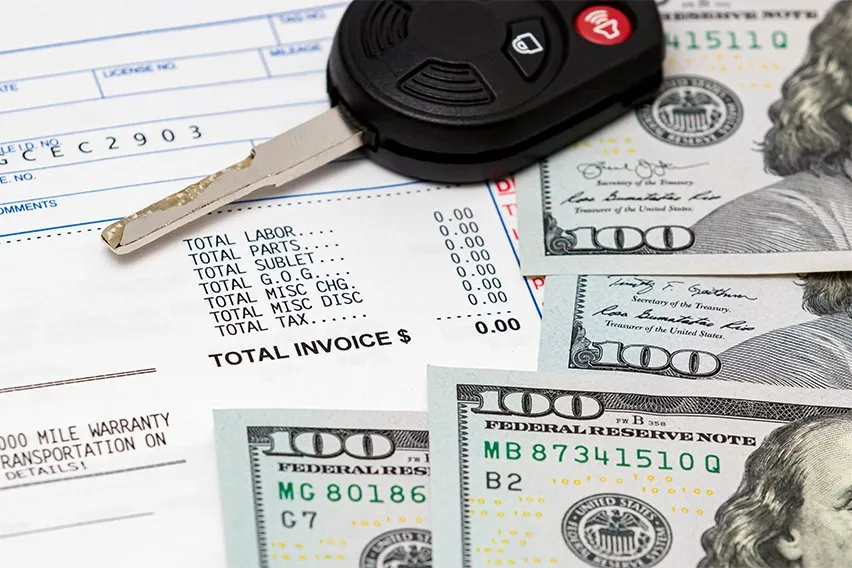What Is Impairment Loss & How to Calculate It?

As a business, you never want your assets to depreciate so much that they lose their resale value. This is what happens with asset impairment. Effectively, a company asset has a lower carrying value than the current market value. Therefore, it’s no longer within the company’s best interest to involve the asset in the long-term operations of the business.
What do all of these terms mean? We break it down in today’s guide.
Here’s What We’ll Cover:
Understanding Asset Impairment Loss: Definitions
What Is Impairment Loss in Accounting?
How to Calculate Impairment Loss
Understanding Asset Impairment Loss: Definitions
Carrying value – The current carrying value is the acquisition cost minus the depreciation losses of the lifetime of a company asset.
Depreciation – Depreciation usually relates to the value of a fixed asset. The value of a fixed asset naturally decreases over time due to wear and tear.
Fair market value – Fair market value is the amount of money a company can expect to receive if they sold their asset on the open market.
Book value/Net asset value – Book value is the cost of carrying an asset on the company balance sheet. It’s also known as the net asset value because it is the asset value minus the expenses that the asset creates for the company.
Salvage value – Salvage value is the estimated book value of a company asset after the depreciation is complete. It spans the entirety of the asset’s useful life.

What Is Impairment Loss in Accounting?
Now that we have the definitions out of the way, let’s put them into practice.
When a company acquires an asset, they expect it to be valuable and useful for as long as possible. That’s the asset’s useful life. An asset declines in value over time which a company can expect with any long-lived asset. Sometimes, there’s an unexpected shift in the economy or natural disaster that causes the value of an asset to depreciate rapidly. That’s to say more rapidly than the natural depreciation process.
So the fair market value drops below its carrying value on the balance sheet.
Accountants calculate the fair market value of each individual asset periodically to spot any impaired assets. This impairment testing prevents long-lived asset impairment which is hard to salvage.
Impairment Vs Depreciation
- Impairment is usually a sudden loss in value. It can result from unexpected sources like a market crash or natural disaster. Depreciation is an expected loss in market value due to normal wear and tear. For example, a car naturally depreciates once it’s driven off the lot. But if the car is set on fire, the value will plummet much more suddenly than regular depreciation.
- Impairment occurs across many asset classes. It could happen to a fixed asset like a property. Or it could happen to an intangible asset like Intellectual Property that is no longer useful. Depreciation is exclusively for fixed assets.
- Impairment and depreciation are recorded differently on the company balance sheet. Depreciation is charged as a tax-deductible company expense.
How to Calculate Impairment Loss
Step 1: Calculate the asset’s depreciation
To calculate the depreciation of an asset, you need to know the useful life and the acquisition cost. The useful life of an asset is exactly as it sounds – how long will the asset be useful for?
You need to divide the acquisition cost by the number of years to get the depreciation rate. Then subtract the equivalent number of years you’ve had the asset for.
Let’s say you purchase a company car for $30,000. It has a useful life of 10 years.
The depreciation rate is, therefore, $3000 per year.
You’ve had the car for 3 years so far. So total depreciation is $9000.
Step 2: Calculate the asset’s carrying cost
The carrying cost is the acquisition cost minus the total depreciation.
In our example, that would be $30,000 – $9000.
The carrying cost is $21,000.
Step 3: Calculate the asset’s recoverable value/salvageable value
Next, we need to calculate how much money you would get back by selling the asset. That’s the recoverable value.
There are two ways of calculating this.
- Recoverable value = fair market value – cost to sell
OR
- Recoverable value = value in use
It’s helpful to calculate both the cost to sell and the value in use to determine which formula to use.
Let’s start with the cost to sell. The fair value minus the cost to sell is the carrying amount minus selling costs. Let’s say it will cost $8000 to sell the car. These could be brokerage fees, advertising, labour costs etc. The recoverable value, in this case, would be $21,000 – 8000. That’s $13,000
Value in use means how much money the asset can potentially bring in for the remainder of its lifespan. This is essentially calculating the future cash flows. When reviewing actual cash flows, the car has the potential to help you tangibly bring in $3000 a year. But it has a $1000 cost to maintain and fuel each year. Therefore, the value in use per year is $2000. The value in use for the remaining 7 years of its useful life is $14000.
You want to use the lowest possible value. So in this case, we would use the fair market value minus the cost to sell. $13,000.

Step 4: Calculate the impairment loss
Now to calculate the impairment loss.
Impairment loss = carrying cost – recoverable amount.
$21,000 – 13,000 = 8000
This is what you note as your impairment.
How to Record Impairment Loss on Your Balance Sheet
You record asset impairment losses on your balance sheet at the end of the current period. By recording impairment losses, you can save on your taxes. It’s a deduction you can write off like any other deduction.
Key Takeaways
It’s important to monitor your portfolio of assets during annual periods and interim periods. If any asset presents a cash flow risk, have a look at the economic conditions surrounding it. The business climate, currency risk or another unexpected disaster could be indicators of impairment.
FreshBooks makes it easy to create automatic financial statements for your business. Learn more today.
Did you enjoy this accounting guide? We have plenty more free information in our resource hub.
RELATED ARTICLES

 Top Down Vs Bottom Up: What’s the Difference?
Top Down Vs Bottom Up: What’s the Difference? What Is Price Skimming? Definition & Examples
What Is Price Skimming? Definition & Examples What is Owner’s Equity? Formula, Examples & Calculations
What is Owner’s Equity? Formula, Examples & Calculations What Is Bill of Materials (BOM) & How to Create One?
What Is Bill of Materials (BOM) & How to Create One? What Is Credit Note & When Should a Business Use Them?
What Is Credit Note & When Should a Business Use Them? How to Calculate CPP (Canada Pension Plan)
How to Calculate CPP (Canada Pension Plan)